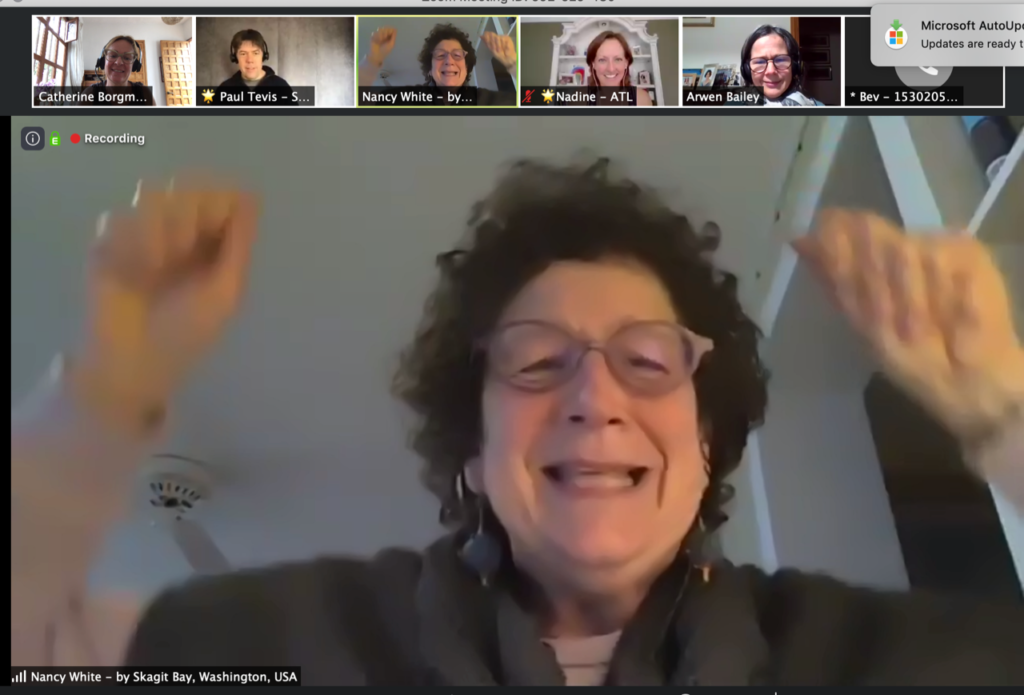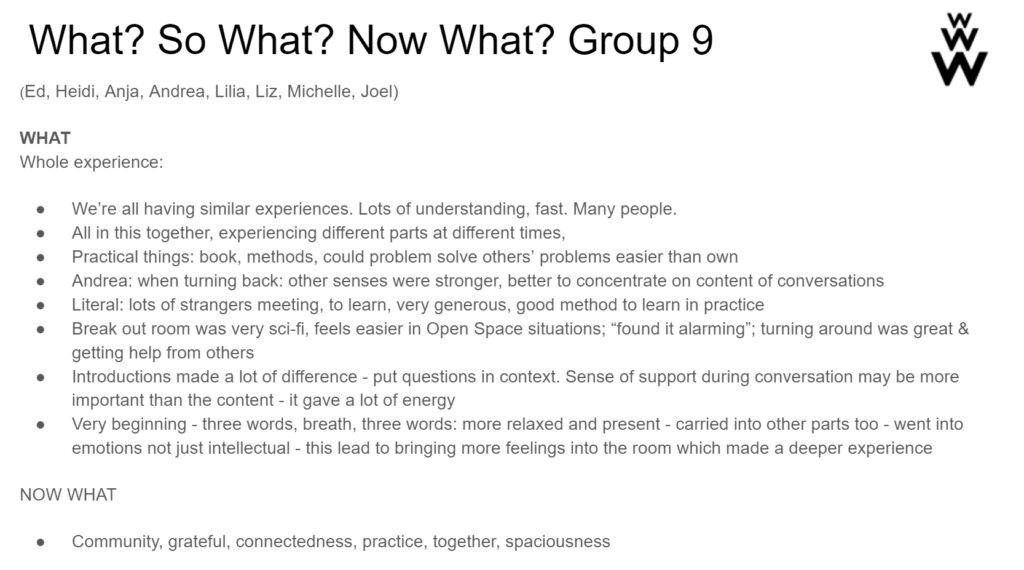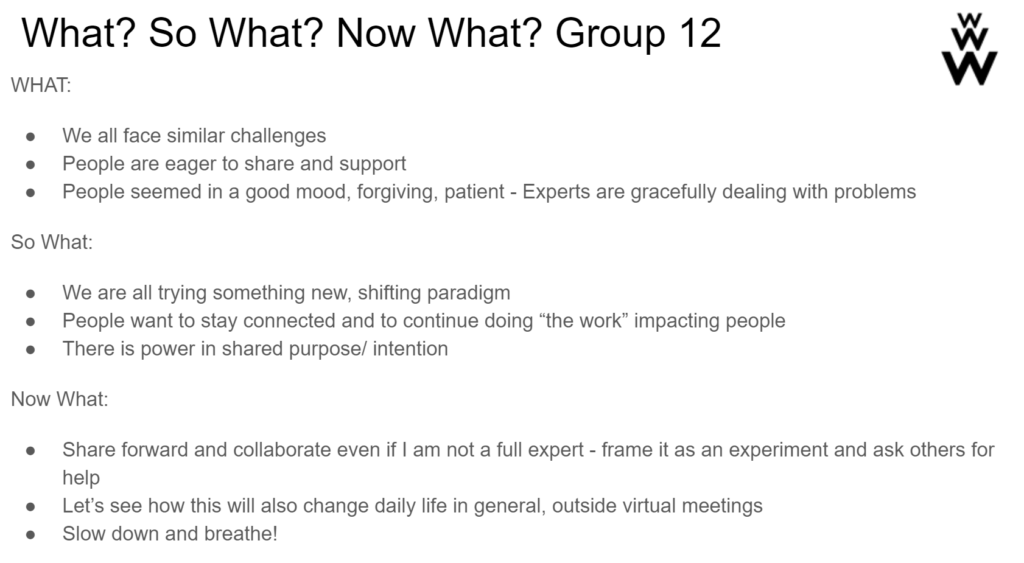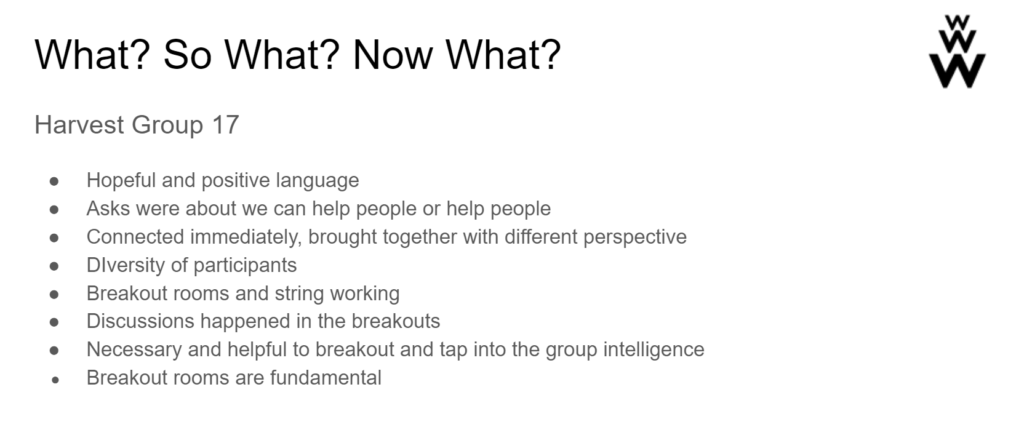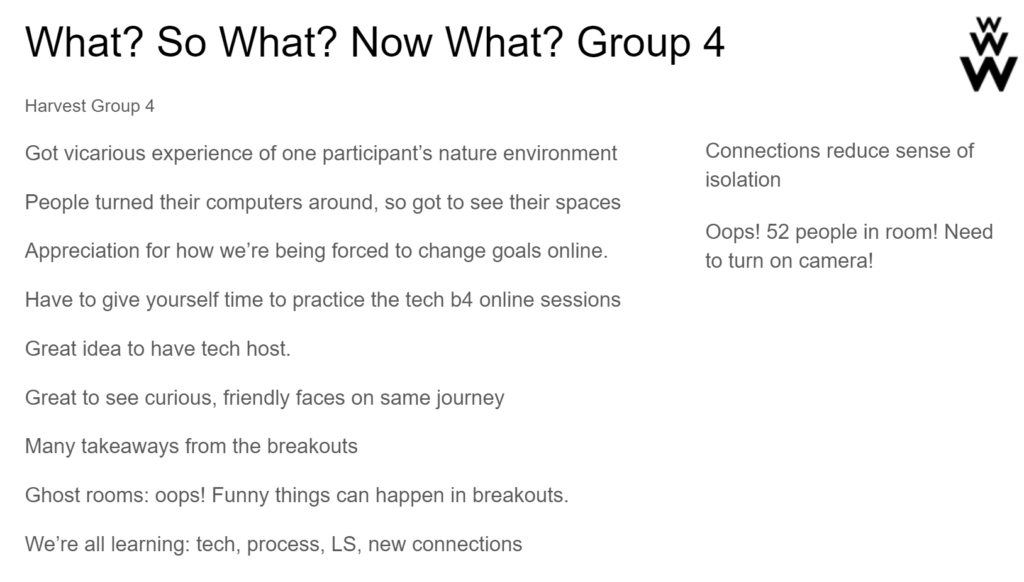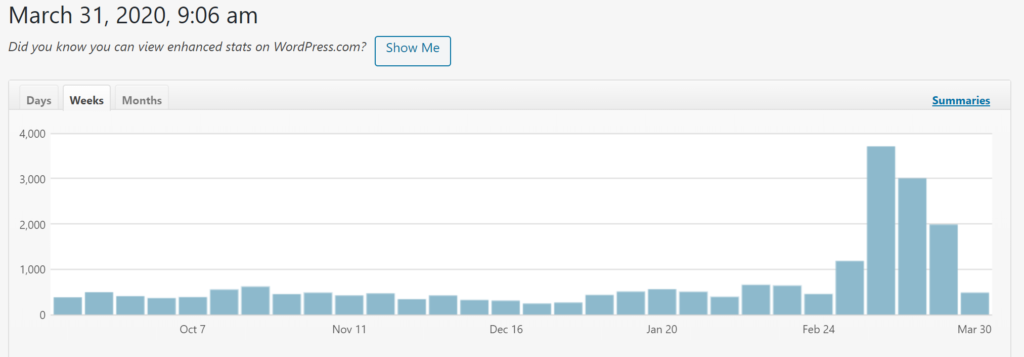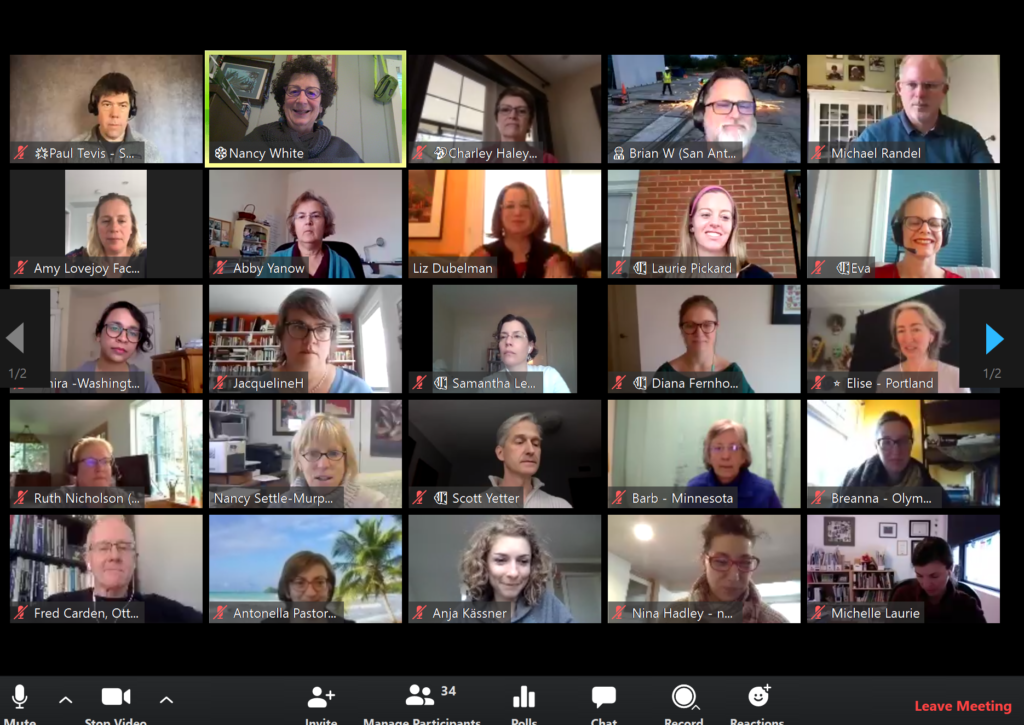Moving Online in Pandemic is now #MOIP! This is 8th in a series of posts about the tidal wave of moving online in the time of Covid-19. #1, #2, #3, #4 , #5 , #6 and #7.
In early April, Rosa Zubizarreta made a wonderful offer. She would interview me on what I’ve been learning and reflecting upon and then write it up for me. What a gift! Of course, I said yes. What started as an interview rapidly turned into a conversation! Rosa promptly returned with the notes and there they sat for two weeks. I kept thinking I’d “process” them into a blog post, and then realized the reality is to just SHARE them, as is.

When a friend offers to help you reflect, say yes!
Rosa’s practice is DiaPraxis: Awakening the Spirit of Creative Collaboration coaching in participatory leadership • advanced group facilitation services & learning opportunities . I first knew Rosa’s work around Dynamic Facilitation. Over the years we have intersected (to my great joy) in different contexts. So enough for context, here are the notes, as is from Rosa.
Conversation with Nancy White
A theme that has been coming up for you in your work, as you help NGO’s move all their work online, is “this is a time of creative destruction”.
And so the questions this brings up include, “What is the role of “creative destruction” in these times? How do we engage constructively with “creative destruction”, in our personal lives, in our work, and in our communities?
A first step you identified, can be to focus more clearly on our purpose. As we do so, we can come up with new ways of meeting that purpose, rather than simply “transposing” what we were doing in the brick-and-mortar world, to the online world…
One simple example is the “check-in”, This is often the initial part of a group meeting, yet it can feel wearying if we are not clear on the purpose.
The purpose of the check-in is to center, settle, let go a bit of the anxiety we are all carrying,
So we can, as a group, figure out our next “right step” to take…
How can we best do so, in these times where we are all facing such diverse challenges, some of them very profound… we need simple and effective ways where we can at least briefly acknowledge and honor the challenges that each of us is facing at the moment.
***
Right now there is a great deal of shared anxiety… while at the same time, we are all anxious about different things. So how can we constructively and gracefully acknowledge emotion, without getting bogged down in it? Especially in a large group, emotions can drag us into a downward spiral. Yet sometimes, especially when we can hold them more intimately in a smaller group, there can be an upward spiral that happens from acknowledging the motions we are feeling.
So some of the check-ins you have been doing with people, include reflective writing that people do on their own, using short prompts or sentence-starters, and then share in pairs.
Another alternative is to invite people to type in their responses to the short prompts in the chat box, while also asking them to wait for the signal from you, so that everyone can “hit enter” at the same time. Then you offer a minute or two for everyone to read over, one another’s entries in the chat box….
***
And then there are our bodies… the bodies that carry our feelings, and that also get stressed out from being in front of the computer, staring at a screen, for long periods of time… and so in breaks between each main part of the meeting, you have been inviting people to take a series of belly breaths,. Taking three deep breaths, allowing your belly to press against the vagus nerve, which brings calm to the reptilian brain…
And stretch breaks: inviting participants to take a moment to stand up, and move your body in a way that feels good for you… either turning off your camera, or simply turning your back to it, whatever allows you to relax and not be self-conscious.
Paying attention to our bodies is a helpful practice always, yet in these times of crisis, it is especially important to do so. It takes a lot of attention to be looking at a screen; we need to be careful about not being online for too long without breaks. Making sure people have plenty of “fluid adjustment breaks” — water in, water out — really helps our bodies in these times of stress. And paying attention to our body rhythms, allows our energy to last longer.
Similarly with paying attention to emotions. Of course people have differences in how comfortable they are with emotions; some people may welcome expressing emotions, while others may need to say, “I need a break from emotions.” Part of emotional literacy is being able to make room for those differences, as well… even simply to acknowledge them….
So this is one way in which “creative destruction” is showing up… the old paradigm of showing up for meetings only “from the neck up” is something we are being called to let go of…
While at the same time, refocusing on the power of attentive listening.
***
Another realm of “creative destruction” has to do with the constraints of formality… instead of three-piece suits and ties, people are now calling in from their homes, with their dogs and their kids. You have been noticing how much easier it is, to feel immediately closer to them. There is an intimacy of popping into people’s living rooms… while it too has its downsides, we can also celebrate all that it makes possible…
And at the same time, need to keep in mind, how we help clients who don’t have online access, to also access services…
***
“Creative destruction” is showing up in other realms as well, not just with regard to meetings… also with regard to children’s education, as parents are exploring learning in a different way than schooling…
And, as we let go of the things that we had previously designed, and were attached to, –whether they were designed well or not — there are emotions that come up: there is fear, and there is a grief process…
And so a question we need to ask ourselves, is how much time do we want to spend, acknowledging the fear and the grief, and how much time in moving forward?
And then, when we are looking at moving forward, there is the task of choosing the “right next step”, from among a million possibilities. There is the challenge of decision-making in a time of transition, and the awful responsibility of it.
For example for an individual, it could be, when to isolate?
For an organization, it could be, do we transfer all planned training from offline to online — or maybe, do we want to rethink training in general?
One helpful approach here is the importance of appreciating what is working. This is part of seeing what is possible. If we can’t appreciate anything, it makes it harder to see what is possible.
Discovery & action dialogue is a way of applying AI and positive deviance.
When we are working with the 15% pattern, we are looking at a) what is my challenge? b) what is the 1st step I can take toward meeting it? (The first step toward, what is possible); and then c) How will we know if we are making progress? We are not talking about randomized controlled evaluation here, but rather attuning to simple indicators…
Then, after we have chosen a right next step, as well as the indicators that will let us know if we are making progress, it can be helpful to distill our message, and find clear and succinct ways to communicate; right now we are all suffering not just from information overload, but also, from disinformation overload…
***
Misc…
From a larger perspective, we are seeing that the same stuff that flattens the curve with regard to the Corona virus, also flattens the curve with regard to the climate crisis…

